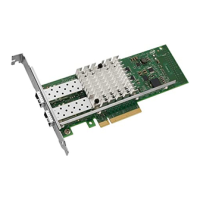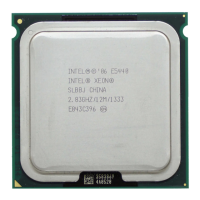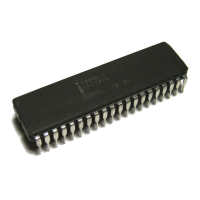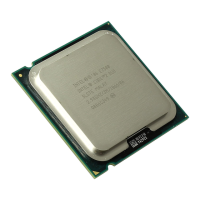
Do you have a question about the Intel Xeon Phi Processor x200 and is the answer not in the manual?
| Architecture | Knights Landing |
|---|---|
| Process Technology | 14nm |
| Base Clock Speed | 1.3 GHz - 1.5 GHz |
| Turbo Boost Clock Speed | 1.7 GHz |
| Memory Support | DDR4 |
| Max Memory | 384 GB |
| Memory Speed | 2400 MHz |
| Memory Channels | 6 |
| Integrated Memory Controller | Yes |
| Instruction Set Extensions | AVX-512 |
| PCI Express Lanes | 36 |
| Socket | LGA 3647 |
| TDP | 215 W |
| L1 Cache | 32 KB per core |
Overview of processor package mechanical design and integration, serving as the primary interface.
Details the multi-chip package, including LGA3647-1 socket interface and IHS.
Provides processor package dimensions and tolerances, including IHS and fabric extension details.
Lists package land dimension details, base material, plating and plating thickness.
Describes the SMT LGA socket for the processor, its components, and features.
Lists LGA3647-1 socket attributes, including pin grid geometry and solder ball characteristics.
Details socket attachment methods and testing against mechanical shock and vibration.
Provides loading and board deflection specs for the LGA3647-1 socket.
Lists CTF attributes for main board layout and component interface to the socket.
Details contact count, layout, base material, plating, and paddle specifications.
Defines offset between LGA land center and solder ball center for contact alignment.
Describes contact design for adequate normal force and meeting performance targets.
Describes the spring-loading mechanism for processor retention to the main board and heatsink.
Details the backplate's role in structural rigidity, solder joint reliability, and material.
Describes the integrated subassembly with guiding posts, springs, and nuts for retention.
Details the carrier as part of PHM, its function in holding the processor and attaching to heatsink.
Specifies heatsink solution volume, material, and integration into the PHM.
Defines bolster and back plates to meet socket loading and PHM support during shock/vibration.
Lists heatsink mass limits, stiffness, flatness, and base thickness attributes.
Covers retention assembly design, reference thermal solution, and validation criteria.
Covers allowable board thickness, reference board layout, and board keep-outs.
Explains MCP thermal requirements, interface to thermal solution, and system-level cooling.
Lists TDP and TCASE values for different processor SKUs under various workloads.
Discusses monitoring die temperatures, IHS TCASE specs, and measurement locations.
Illustrates thermocouple locations on the processor package IHS for TCASE measurement.
Defines socket maximum temperature, via temperature guidance, and measurement methods.
Covers system thermal environmental conditions, including ambient temperature and airflow.
Addresses compliance with TCASE targets, fan speed control, and thermal excursion power.
Details reliability performance evaluation using use conditions and acceleration models.











